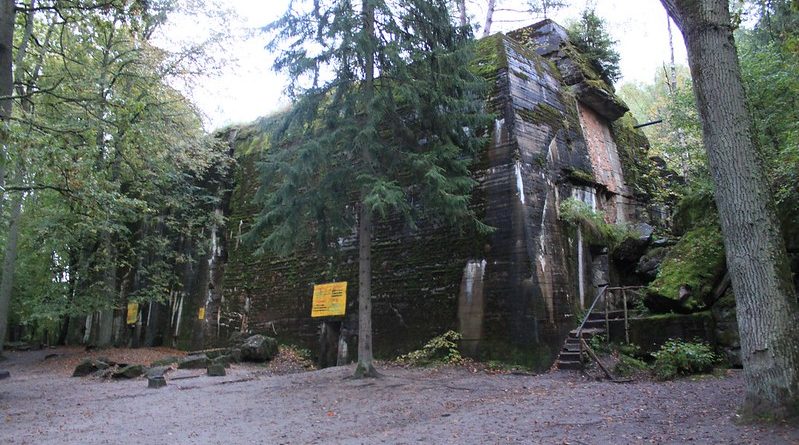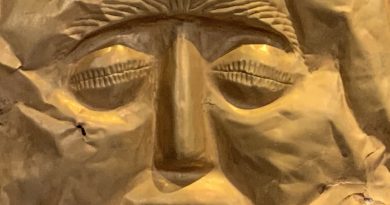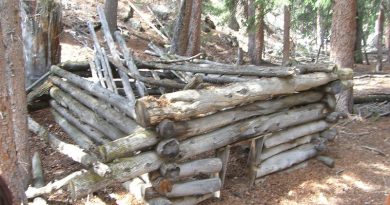WOLF’S LAIR : Hitler’ Hideout
Deep in the heart of the Mazurian forest in Eastern Poland, lies one of the country’s WWII sites that would probably rather be forgotten than remembered: Wolf’s Lair, Adolf’s Hitler’s headquarter, or rather – one of the 14 completed headquarters out of the 20 that were in the planning. The selected area was far from any major roads in an old and beautiful Polish forest, which formed a natural shield all year round. The Great Mazurian Lakes provided a further natural barrier against an enemy approaching from land. In 1940, a decision to build here had been made on the criteria of its closeness to the former Soviet Union border of the Kętrzyn forest. The so-called Barbarossa plan foresaw an attack against the Soviet Union, and so East Prussia had become one of the most fortified districts of the Third Reich, with fortresses and fortified areas.
Wolf’s Lair was built with great effort and attention to detail to fade naturally into its surroundings and to mask itself from the enemy’s eyes, but overall, these headquarters were anything but small or modest. At a distance of 20km to 100km from Wolf ‘s Lair there were other central command headquarters. Decentralization had to reduce the effects of possible aircraft attack. All centrals located in Eastern Prussia were included in the fleet aircraft warning system “Reich” so that any aircraft would be detected in a radius of 100 km from Wolf’s Lair.
A specialized gardening company “Seidenspinner” from Stuttgart was responsible for masking. Most buildings constructed here had flat roofs 10 to 30 cm deep. They were filled with earth in which bushes, grass and artificial trees were planted. There were metal bows in the shape of the inverted letter U on the edges of the roofs. Masking grids were stretched between them and the surrounding trees. The effectiveness of masking was tested with the use of aerial photographs – it gave the impression of a dense forest.
The Führer’s Armored Battalion (FBB), which until July 1944 had grown to the size of a regiment, was responsible for external protection of the headquarters. They were equipped with tanks, anti-aircraft guns and heavy weapons. A unit of landing troops was stationed near Gołdap in a distance of approximately 75 km from Ketrzyn. Very sophisticated psychological masking was also used. All the people working in the construction of Wolf’s Lair had civilian passports. Up to 21 June 1941 Russian linear aircraft flying between Berlin and Moscow was allowed to fly over the site. This way it was suggested that buildings constructed in the forest could not have any real military significance.
Back in 1944, more than 2,000 people lived here in 200 buildings – shelters, barracks, two airports, and a power station were part of this perfect hideaway, where the top Nazi commanders resided on and off during World War II. Among them: Hermann Goring, Heinrich Himmler, Martin Bormann, Albert Speer, and Joseph Goebbels. Hitler came here on 24 June 1941 with his adjutants and would reside here for over 800 days during the years of 1941-1944. When present at Wolf’s Lair, he followed a rather eerily boring routine that included walking his dog, reading his morning mail delivered by aircraft from Berlin, meetings, meals and strategic planning sessions.
Hitler’s paranoia of assassination attempts and traitors resulted in two groups of the Reich Security Service (RSD) being responsible for his personal security. There were 10 officers of criminal service and a dozen of Hitler’s personal guards in each of them. RSD officers had an injunction to stay away from each other during service and not to talk without need and above all not to come into Hitler’s shelter unless it was dictated by the need to review workers at the facility. When Hitler was outside his shelter the RSD officer had to be so far from the Führer that the forthcoming person could be stopped without disturbing Hitler. And yet, Wolf’s Lair, or in German ‘Wolfsschanze’, became the site of the ‘July Plot’, an abortive attempt on 20 July 1944 by German military leaders to assassinate Hitler, seize control of the government and seek more favourable peace terms from the Allies in anticipation of Germany’s surrender.
The coup was code-named Valkyrie, and was initiated in late 1943, but Hitler was increasingly suspicious and abruptly changed his schedule, thwarting a number of attempts on his life. The leaders of the plot included retired colonel general Ludwig Beck (formerly chief of the general staff), Major General Henning von Tresckow, Colonel General Friedrich Olbricht, and several other top officers. Field Marshal Erwin Rommel, one of Germany’s most prestigious commanders, agreed with the conspirators that Hitler should be removed from power, but he looked on assassination with distaste and took no active part in the assassination attempt. The most motivated conspirator was Lieutenant Colonel Claus, Count Schenk von Stauffenberg, who personally carried out the assassination attempt.
On July 20 1944, Stauffenberg left a bomb in a briefcase in a conference room at the Wolfsschanze (Wolf’s Lair) field headquarters at Rastenburg, East Prussia, where Hitler was meeting with top military aides. Stauffenberg escaped from the room, witnessed the explosion at 12:42 pm, and, convinced that Hitler had been killed, flew to Berlin to join the other plotters, who were to have seized the Supreme Command Headquarters there. Bad luck and indecisiveness thwarted the plans. An attending officer had nudged the briefcase containing the bomb out of his way to the far side of the massive oak support of the conference table, which thus shielded Hitler from the full force of the explosion. A stenographer and three officers died, but Hitler escaped with only minor injury.
Meanwhile, the other conspirators, unsure whether Hitler was dead, failed to act until Stauffenberg landed near Berlin more than three hours later. By then it was too late. Rumours of Hitler’s survival melted the resolve of many of the key officers. In a countercoup at the Berlin headquarters, General Friedrich Fromm, who had known about and condoned the plot, sought to prove his allegiance by arresting a few of the chief conspirators, who were promptly shot (Stauffenberg, Olbricht, and two aides) or forced to commit suicide (Beck). In subsequent days, Hitler’s police rounded up the remaining conspirators, and about 180-200 people were tortured, shot, and hanged.
The decree to destroy Wolf’s Lair was issued on 24/25 January 1945; three months after the Red Army troops reached the eastern border or East Prussia. By then Hitler had moved his headquarters to Berlin. As witnesses stated, as a result of the explosions ice cracked on the nearby lake Siercze. It is estimated that around eight tonnes of TNT were used to destroy one bunker. On January 27 1945, Red Army troops took over Wolf’s Lair without a single shot. The securing of the minefields lasted until 1955. More than 54 thousand landmines were discovered and secured. It was necessary to secure 72 hectares of forest and over 52 hectares of land altogether.
Wolf’s Lair is at once fascinating, depressing and eerie, as it serves as a window into the surroundings of the person who masterminded Europe’s darkest years. It is symbolic for all that contemporary Poland would prefer to leave behind, but at the same time, opening the site up to the world shows that Poland has most definitely moved on.




